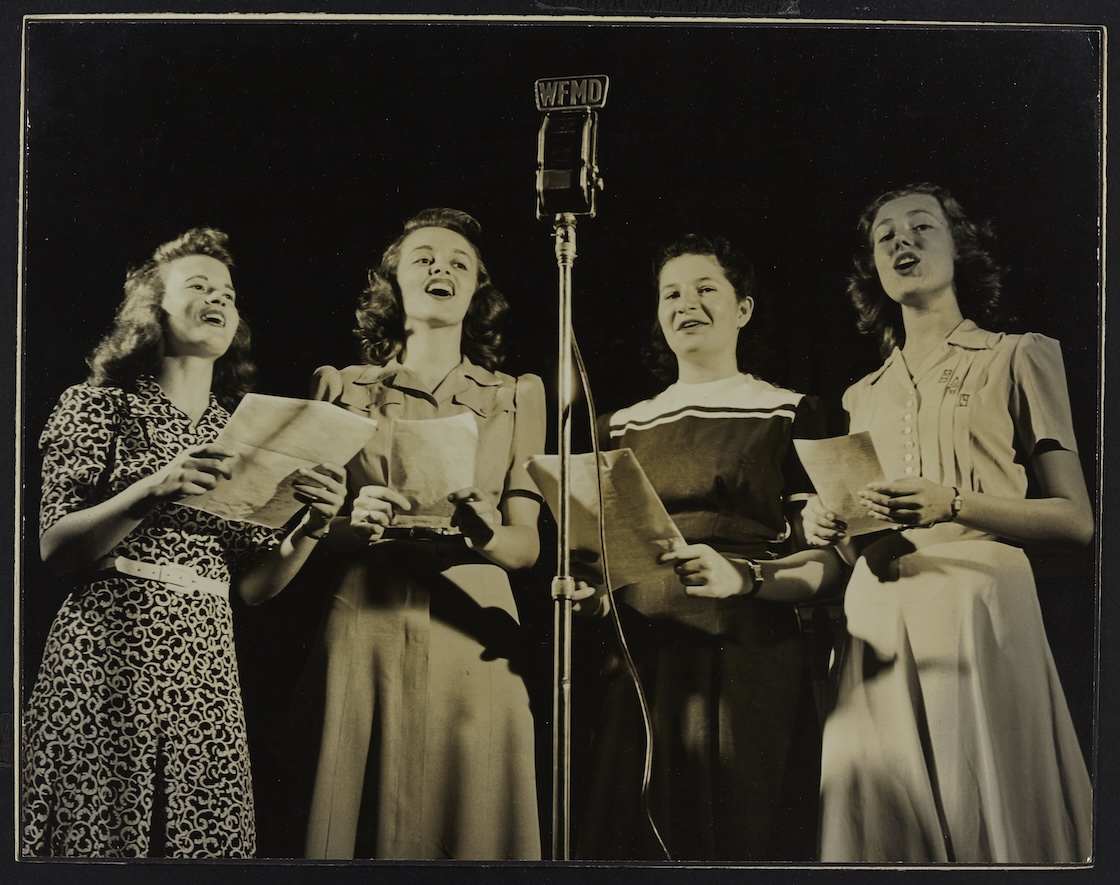Turning Up the Volume | The Golden Age of Radio at Hood

Mary Atwell, Hood College archivist, explores the history of radio production at Hood.
Hood Magazine Spring ’25
Radio has a long and interesting history at Hood. The first commercially viable radio transmission system was patented in 1897 by Guglielmo Marconi, only four years after the College was founded. Radio brought news from around the world to campus without the delay of newspapers or letters from home. On campus, though restricted to the Y-Hut (later Carson Cottage), students could listen to music, dramas, comedies and commentaries without cost or travel.
A May 4, 1923, Blue and Grey article, about the discovery of King Tutankhamen’s tomb in Egypt, pondered the permanence of civilization’s records—and sounds eerily familiar now:
“We are living in an age of unprecedented progress in scientific and artistic matters, but the very rate at which we live is the death knell of any permanence. The marvels of the radio, telephone and telegraph have done a great deal to advance our civilization, but will there be any permanent record of these things left?”
This century-old sentiment echoes discussions and fears in the archival world about the documentation of the 21st century, which is largely found in social media, apps, online forums and websites. The similarity makes sense, as radio was to the early 20th century what social media is to the 21st. Radio could not be easily captured until magnetic sound recording emerged after World War II. Likewise, the transactions within apps, many of which were created to facilitate transient activity, are difficult to document.
By 1932, Hood students clamored for radios in every dorm to allow easy access to radio programming; within a month, dorm radios were ordered, and eventually they were allowed in dorm rooms with permission given by all occupants.
In 1949, the National Academy of Broadcasting began advertising a radio course in The Blue and Grey to train people for radio jobs. Later that year, the Radio Workshop club was created. Whether or not these ads spurred the club’s creation, interest in radio then was as intense as social media is today.
The club began as an offshoot of the Marionettes, a performing arts student club that regularly gave dramatic and comedic performances. Radio Workshop members wrote scripts for a brief monthly program they aired on local radio station WFMD, which included radio plays, musical revues, children’s shows, poetry recitals and newscasts.
This program grew quickly in popularity on campus and in town, so much so that the Frederick Chamber of Commerce sponsored a larger weekly program from Hood in 1950. Students and faculty broadcast one-time programs as well. For dramatic readings and skits, they relied upon men from Fort Detrick to play the male roles. The club used the facilities at WFMD through the 1950s but moved to WMHI in 1961. According to The Frederick News-Post, WMHI first went on the air in 1960. WMHI was an AM station in Braddock Heights that played popular music. It is no longer around, but WFMD still entertains and informs the Frederick community.
The club flourished for more than a decade but suddenly disappeared from The Blue and Grey in 1962. There is no available explanation in the archives, but I am guessing that WFMD and, a few years later, WMHI dropped Hood’s on-air programs in favor of those that appealed to wider audiences and, more specifically, to advertising businesses. WMHI was a “daylighter” station (only allowed to broadcast during the day), so programming slots were much tighter than a typical station.
It would take nearly 50 years for student-run radio to return to Hood. Needless to say, the programming is much different today than it was in the 1950s and ’60s. The enduring popularity of radio, however, is a testament to its staying power, and I suspect that Blazer Radio will be around for many years to come.
Are you ready to say Hello?
Choose a Pathway
Information will vary based on program level. Select a path to find the information you're looking for!
